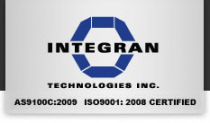Insights on the Aluminum Cans Global Market to 2026 - Featuring Ardagh Group, Crown Holdings and Tecnocap Group Among Others - ResearchAndMarkets.com
The "Global Aluminum Cans Market - Growth, Trends, COVID-19 Impact, and Forecasts (2021 - 2026)" report has been added to ResearchAndMarkets.com's offering.
The global aluminum cans market was valued at USD 42.05 billion in 2020, and it is expected to reach USD 55.31 billion by 2026, registering a CAGR of 4.29% from 2021 to 2026.
Aluminum cans offer long-term food quality preservation benefits. Aluminum cans deliver nearly 100% protection against light, oxygen, moisture, and other contaminants. These cans do not rust and are resistant to corrosion and provide one of the most extended shelves lives considering any packaging.
Companies Mentioned
- Ball Corporation
- Ardagh Group
- Crown Holdings Inc.
- Silgan Holdings Inc.
- CAN-PACK SA
- CCL Container Inc. (CCL Industries Inc.)
- Tecnocap Group
- Saudi Arabia Packaging Industry WLL (SAPIN)
- Massilly Holding SAS
- CPMC HOLDINGS Limited (COFCO Group)
Key Market Trends
High Recyclability of Aluminum Cans is expected to drive the market.
- Growing environmental concerns worldwide have resulted in increasing awareness about the type of packaging materials utilized. The high energy consumption of packaging manufacturing is one of the factors pushing recycling. Diminishing natural resources, global warming, and the impact of plastics on the environment are the major trends influencing consumer demand.
- Initiatives by environmental groups and public awareness about the environment have increased awareness among users across the world. Consumers are demanding packaging products that cause no or lower environmental impact. Consumers are increasingly abandoning plastic usage, whereas the demand for recycled products is growing. As a result, it is creating a high demand for metal packaged products, including aluminum cans.
- The recyclability of aluminum is one of the key factors influencing the consumption of aluminum cans in the market. Aluminum cans are almost 100% recyclable. Metal cans, specifically aluminum, are the most recycled packaging units across the world. These cans can be recycled at the end of their life cycle without degrading the quality, making them the preferred packaging material for companies across the industries, such as plastic and paper.
- According to the Aluminum Association and Can Manufacturers Institute Report, published in December 2020, the consumer recycling rate for aluminum cans was 46.1% in the United States in 2019. Moreover, according to Metal Packaging Europe and Europe Aluminum December 2020 report, The total recycling rate for aluminum beverage cans in the European Union, Norway, Switzerland, and Iceland increased by over 2% from 2017 (74.5%), to reach an all-time high of 76.1% in 2018.
North America to Hold a Significant Share in the Market
- North America holds the largest market share in terms of revenue due to the growing concerns regarding the use and consumption of sustainable packaging materials. It accounts for more than one-third of the total global consumption of aluminum cans.
- The presence of aluminum producers and demand from packaging firms is also boosting the growth in North America. According to World Aluminum Organization, 5,112 thousand metric tons of primary aluminum are produced worldwide as of February 2020, out of which 312 thousand metric tonnes are produced in North America, which helps to grow the aluminum can help the industry in this region.
- Aluminum cans have a higher recycling rate and more recycled content than competing package types. According to the Aluminum Association, it's one of the most recycled materials on the market. Recycling saves more than 90% of the energy required to produce new metal hence reducing the cost of production. In the United States, two aluminum cans are recycled for every three cans shipped across the region. Factors such as these will boost the market growth.
- In the US, 70% of the plastic collected for recycling goes to landfills, and the rising emphasis on reducing carbon footprint by controlling climate change is one of the growth drivers for aluminum cans in the region.
- Owing to the increasing consumption of alcoholic and non-alcoholic beverages such as beer and carbonated drinks, there has been a significant demand for aluminum cans. For instance, according to the Alcohol and Tobacco Tax and Trade Bureau, in 2020, the volume of beer produced in the country was around 179.95 million barrels. Also, according to the Beer Institute's 2020 Report, America's brewers make use of around 36 billion aluminum cans every year.
Key Topics Covered:
1 INTRODUCTION
2 RESEARCH METHODOLOGY
3 EXECUTIVE SUMMARY
4 MARKET INSIGHTS
4.1 Market Overview
4.2 Industry Value Chain Analysis
4.3 Industry Attractiveness - Porter's Five Forces Analysis
4.4 Assessment of the Impact of COVID-19 on the industry
5 MARKET DYNAMICS
5.1 Market Drivers
5.1.1 High Recyclability Rates of Aluminum Cans
5.1.2 Increasing Demand for Canned Foods driven by Cost and Convenience-related Advantages
5.2 Market Restraints
5.2.1 Availability of Alternative Packaging Solutions
6 MARKET SEGMENTATION
6.1 By Type
6.2 By End-user Industry
6.3 By Geography
7 COMPETITIVE LANDSCAPE
7.1 Company Profiles
8 INVESTMENT ANALYSIS
9 FUTURE OF THE MARKET
For more information about this report visit https://www.researchandmarkets.com/r/zh4lu2
View source version on businesswire.com: https://www.businesswire.com/news/home/20220104005880/en/




